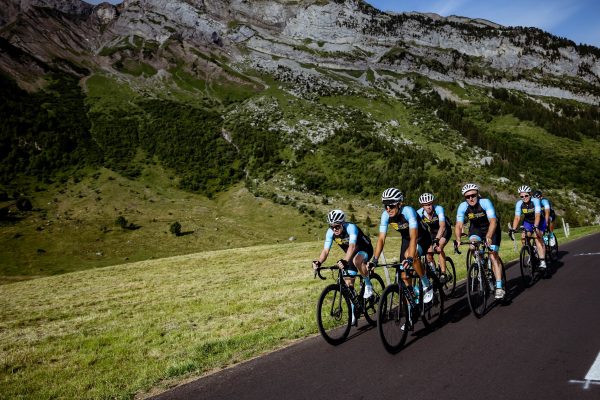Two months before the start of the 1910 Tour de France, Alphonse Steinès, a journalist at L’Auto who worked with the race organiser Henri Desgrange on planning the route, set off in his car to ascertain whether it was possible for cyclists to ride the Pyrenees. Halfway up the Tourmalet, Steinès was forced to abandon his car due to a snowdrift. He continued on foot, got lost as night fell, fell into a ravine and wasn’t rescued until 3 a.m. He then sent Desgrange the following telegram: "No trouble crossing Tourmalet. Roads satisfactory. No problem for cyclists. Steinès."
And so it was that in 1910, the Tour de France visited the Pyrenees for the first time. Competitors were treated to the Peyresourde, Aspin, Tourmalet and Aubisque mountains. They complained, with eventual winner Octave Lapize famously screaming “assassins” at the race organisers. Despite these protestations, the Tour returned to the Pyrenees in 1911 and added in the Alps for good measure.
Over a century later, their inclusion is as much a part of the Tour’s essence as the yellow jersey (used first in 1919), the Champs-Élysées (since 1975) and the French not winning (since 1985). With the place of these mountains assured in the race, the inevitable question of which is better arises.
Like any question worth asking, there is no definitive answer and responses tend to be based on the qualitative and subjective. From the perspective of a competitor, preference is generally borne out of riding style. As a rough rule, the climbs of the Alps are generally longer with more gradual and consistent gradients than those in the Pyrenees. As such, cyclists that like to get into a rhythm tend to prefer the Alps. On the other, more explosive climbers who enjoy a change of pace find the irregular slopes of the Pyrenees offer more opportunity to exploit their abilities.
As a spectator, your preferences for climate and scenery are likely to sway you to a large extent. The Pyrenees have more trees and the mountains are more rolling. In the Alps, the rocky, snow-capped peaks are generally considered to be more spectacular. The Pyrenees have narrower, less well-made roads and it’s generally a bit warmer - good for spectators and bad for cyclists. The Pyrenees are less busy but if you’re following the Tour, there will be crowds everywhere.
Another aspect worth considering is how much time you have. During the 2016 Tour de France, there are really only three stages in the Pyrenees and they are quite spread out distance-wise. The Alps, on the other hand, play host to the race for over a week, and most of the action takes place in a relatively concentrated area.
The three stages in the Pyrenees do pack a punch. The first day (stage 7) sees the riders tackle the Col d’Aspin. Stage 8 offers Tourmalet, the Hourquette d’Ancizan (from a new side), the Col de Val-Louron-Azet and Peyresourde. And stage 9 dishes up five climbs, including the Col de la Comella, Beixalis and finally the long climb to Arcalis.
The Alps opens with Ventoux, and then the Grand Colombier twice (or one and a half times), the Col de la Colombière, the Joux Plane and many others. There’s a 17km individual time trial that goes mostly up but isn’t quite a mountain time trial. There are also several lesser-known climbs in the Alps next year, which is always interesting.
Whatever you prefer, if you’re fortunate enough to be able to see the Tour live, either mountain range offers a great place to watch the race. Unlike flat stages, when the entire peloton usually passes by in a matter of seconds, watching the race on the side of a mountain affords spectators a chance to see the cyclists spread out and travelling relatively slowly (relative to flat stages, not relative to you). And if you listen closely, you might even hear murder accusations under their breath.

By Laurence Guttmann
